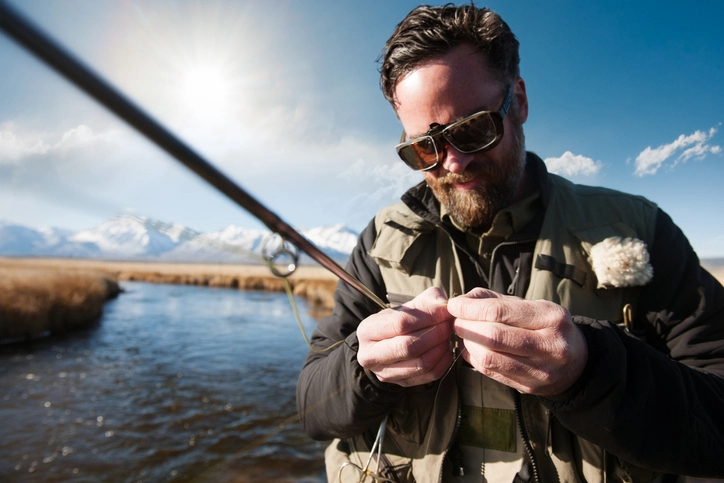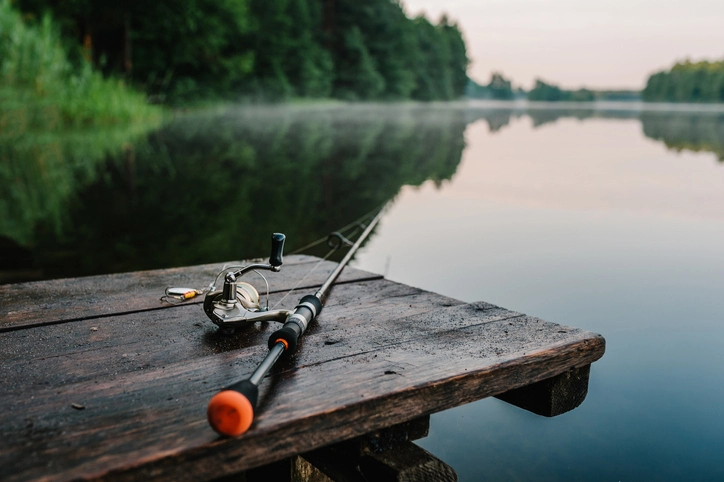Choosing the best fishing lure for Different Fish Species
Engaging in lure fishing brings a notable advantage, enabling mobility and efficient coverage of vast areas. Utilizing a diverse range of lures facilitates exploration throughout the water column and around potential fish-holding features. These lures generally fall into two categories: hard and soft. Hard lures, such as treble-hooked plugs, provide a contrast to soft lures that consist of flexible latex or rubber bodies used with jig heads. The key lies in selecting the appropriate fishing lure for specific circumstances, a task I’m always eager to assist customers with. Ensuring effective fishing lure retrieval is essential for optimal results, and mastering the attractive action of some lures may require practice.
Here are the questions that you should answer before picking your fishing lure to use
What Species Am I Targeting?
Identifying the fish species you target significantly narrows lure options. Predatory fish have specific bait fish preferences, such as smallmouth bass favoring smaller lures than largemouth bass. This is due to the smaller mouths of smallmouth bass, making large swimbaits challenging to swallow. Opting for a ned rig, with its smaller presentation, is more suitable for targeting smallmouth.
What Type of Water Am I Fishing? (Flowing, grassy, clear, etc.)
Every fishery varies, with one lake boasting crystal clear water and the adjacent one being murky, filled with grass and reeds. Selecting lures that align with the water type is crucial. In clear water, dull, realistic lures are more effective, resembling the natural bait. The visibility factor makes it imperative for the lure to match the feeding bait, avoiding artificial vibrancy. Conversely, in murky, dark water, a flashy, vibrant lure with bright colors grabs the attention of predator fish, especially when their visibility is limited to just 1ft in front of them.
MATCH THE HATCH
The world of bait thrives on variety,
diversity reigns supreme, with tackle stores presenting an array of sizes, colors, and types. The process of choosing the ideal lure color need not be daunting. On your next visit to the preferred tackle store, employ these tips to confidently pick the perfect bait tailored to your needs.
- Factor in Size and Color
When aiming to attract specific fish, align the bait color and size with the prey they typically consume. Oversized bait may startle the target fish, while undersized bait might go unnoticed. Replicate the natural color of the prey, as most fish feed on items with a distinct natural hue. While vibrant bait may be effective offshore, opt for muted colors when fishing at the lake to enhance your chances of success.
- Factor in Location
When selecting the right bait, account for the specific features of your preferred fishing spot. In freshwater, artificial bait tends to attract more attention, while saltwater environments often see greater success with live bait. Additionally, consider the depth, as small fish may be drawn to bait either on the surface or below.
- Factor in the Weather
The behavior of fish is closely tied to daily weather patterns. Fish possess keen senses for weather changes, reacting to shifts in atmospheric pressure. Fishing before a cold front is advantageous, as fish tend to be sluggish afterward. On cold, cloudy days, opt for darker bait due to altered light conditions beneath the surface. Conversely, on warm, sunny days with clear water, choose lightly colored bait for optimal results.
- Factor in the Season
Fishing offers year-round opportunities, with changing seasons influencing water temperatures. Adjust your bait accordingly, with moving baits suitable for any temperature. Colder water calls for slower-moving bait like shaky heads, while warmer waters accommodate faster options like crankbaits. Spring spawning season, characterized by increased fish aggression, is ideal for faster baits that align with the fish’s behavior.
To set the stage for success, ensure your gear is balanced and employ the appropriate techniques for specific lures. Following this, prioritize “matching the hatch” and thoroughly cover the water column from top to bottom to target the intended species. Remember, the fundamental principle for most predatory fish is to seek the highest-calorie prey with minimal effort.
I consider Google Earth an essential tool for presenting customers with the terrain they will face. It aids in planning and identifying optimal fishing spots based on tides in the area.
Utilized on the water’s surface, these lures replicate injured baitfish, birds, or frogs. Their gurgling effect and noise aim to attract target fish, creating an exhilarating fishing experience as predators chase, fight, and strike the lures.
- Subsurface Lures
Operating just below the water surface, subsurface lures replicate injured or swimming animals. These lures offer versatile actions, including jerking, splashing, suspending, and sliding.
- Suspending Lures
Mimicking baitfish, suspension lures hover midway through the water column, neither floating on the surface nor sinking to the base during retrieval pauses. They exhibit both fast and slow-motion movements to entice lurking predators effectively.
- Diving/Sinking Lures
Operating proficiently in deep waters, these lures require a strategic approach for optimal results. The faster the retrieval, the deeper the lure sinks. Certain sinking lures offer adjustable diving depth through interchangeable bibs, enhancing versatility in your fishing strategy.
Plastic worms, resembling real worms, offer versatile attachment to hooks, including use with sinkers and jigs. A slow approach near the bottom of the water column is crucial for angling with plastic worms, enticing fish with their wiggling motion.
Fishing lacks a guarantee of a successful catch, as it’s aptly named “fishing” rather than “catching.” Nonetheless, adhering to these tips can refine your angling skills and boost the likelihood of securing your prized catch. Even seasoned professionals occasionally vary their techniques.
Final Tips on Choosing the Best Fishing Lure
As we wrap up our exploration of the intricate world of fishing lures, keep in mind that success hinges on understanding the nuanced interplay between angler, lure, and freshwater fish. Equipped with knowledge of the three primary lure types – hard baits, soft plastics, and spinners – you possess a versatile arsenal ready for diverse fishing scenarios.
When selecting a lure, adopt the perspective of a fish. Research the feeding habits of your target species, factoring in elements like size, color, and movement. Tailoring your lure choice to replicate their natural prey creates an irresistible allure, elevating your chances of a successful catch.
Fishing remains an ever-evolving art, and refining your skills in lure selection adds an exhilarating dimension to the sport. Embrace the learning process, stay adaptable, and may your future fishing pursuits be filled with excitement, discovery, and the satisfaction of mastering the art of choosing the perfect lure. Tight lines and happy fishing!


